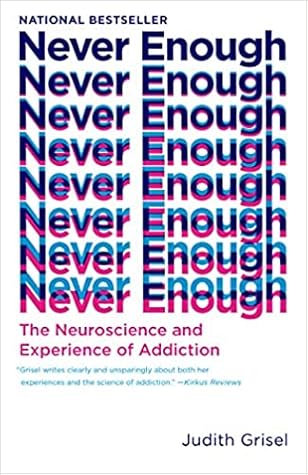More on this book
Community
Kindle Notes & Highlights
Read between
March 15 - May 10, 2020
Each of us was completely alone, and our efforts were primarily directed at maintaining delusions that kept us sane, until we died.
All of us face countless choices, and there is no bright line separating good and bad, order and entropy, life and death.
We all have the capacity for wrong; otherwise we could not, in fact, be free.
The opposite of addiction, I have learned, is not sobriety but choice.
addictive drugs are addictive precisely because they share the ability to stimulate the mesolimbic dopamine system.
dopamine in the mesolimbic pathway works not exactly by signaling pleasure but by signaling the anticipation of pleasure.
Besides being slower to enact intentions, low dopamine is also associated with higher-than-average orderliness, conscientiousness, and frugality.
In general, the more predictable and frequent the dosing, the more addictive a drug will be.
three general axioms in psychopharmacology that also apply to all drugs: All drugs act by changing the rate of what is already going on. All drugs have side effects. The brain adapts to all drugs that affect it by counteracting the drug’s effects.
The feelings produced by a stimulus are captured in State A, and the rebound caused by the attempted return to the neutral state is depicted in State B.
As a result of adaptation after repeated drug taking, the opponent process becomes quicker, stronger, and longer lasting—leading to a reduction in the subjective experience (tolerance) and withdrawal and craving when the drug is not present.
Withdrawal happens because the b process outlasts the drug’s effects.
any environmental signal that has been associated with the drug can itself elicit a b process that can only be assuaged by indulging in the drug.
It turns out that the predictability of this routine leads to changes in your experience. First, the alcohol will have less effect on you in that particular place and time and with those particular friends than it would have elsewhere. If you changed plans and went instead to a party, you’d become more intoxicated with the same amount to drink.
The nervous system of an addict is acting normally and predictably in response to such consequential input, and addiction is a natural consequence.
infrequent and intermittent use is the best way to prevent downregulation and its unfortunate effects: tolerance, dependence, and a loss of interest in the unenhanced world.
Pavlov’s dogs salivated at both food and the bell associated with mealtime. But if a drug makes your mouth water, the cues associated with the drug would give you cotton mouth instead.
By definition, people are dependent on a drug when they experience withdrawal symptoms in its absence.
bottom line of this book, is that there can never be enough drug.
Gianoulakis and her colleagues showed that high-risk individuals have about half as much beta-endorphin in their blood as those at low genetic risk;
Caffeine is the most popular psychoactive drug in the world, although there is some debate about whether or not it is addictive.
For most drugs discussed in this book, it’s likely that with abstinence the b process will dissipate and the brain return somewhere near its nascent state. Unfortunately, it doesn’t look as if this is going to be the case with stimulants, and particularly for those abusing amphetamines or ecstasy.
As it turns out, salvinorin A is the most potent natural hallucinogenic so far discovered (LSD surpasses it,
The flip side of this, also supported by strong evidence, is that the older one is when one begins getting high—on anything from alcohol to amphetamine—the less likely one’s use is to become addictive.
A victim of virtually any disease usually elicits pity; addicts mostly evoke revulsion.


